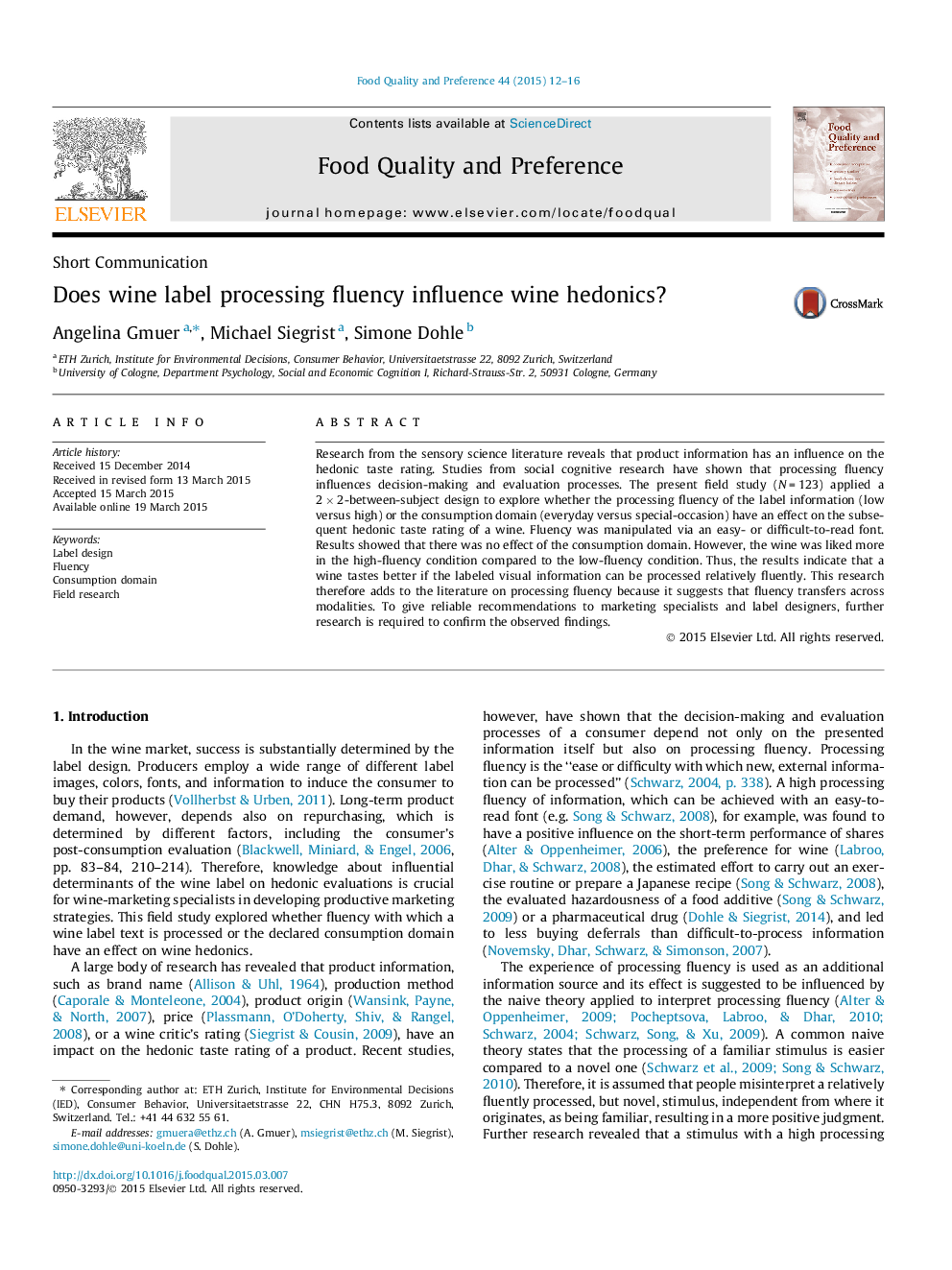| Article ID | Journal | Published Year | Pages | File Type |
|---|---|---|---|---|
| 6261325 | Food Quality and Preference | 2015 | 5 Pages |
â¢The impact of a label's fluency on wine hedonics was examined in a field study.â¢The hedonic taste rating was higher if the label could be fluently processed.â¢The consumption domain did not influence the hedonic taste rating.â¢The study suggests that processing fluency transfers across modalities.â¢Results could be useful for marketers to optimize label design.
Research from the sensory science literature reveals that product information has an influence on the hedonic taste rating. Studies from social cognitive research have shown that processing fluency influences decision-making and evaluation processes. The present field study (NÂ =Â 123) applied a 2Â ÃÂ 2-between-subject design to explore whether the processing fluency of the label information (low versus high) or the consumption domain (everyday versus special-occasion) have an effect on the subsequent hedonic taste rating of a wine. Fluency was manipulated via an easy- or difficult-to-read font. Results showed that there was no effect of the consumption domain. However, the wine was liked more in the high-fluency condition compared to the low-fluency condition. Thus, the results indicate that a wine tastes better if the labeled visual information can be processed relatively fluently. This research therefore adds to the literature on processing fluency because it suggests that fluency transfers across modalities. To give reliable recommendations to marketing specialists and label designers, further research is required to confirm the observed findings.
